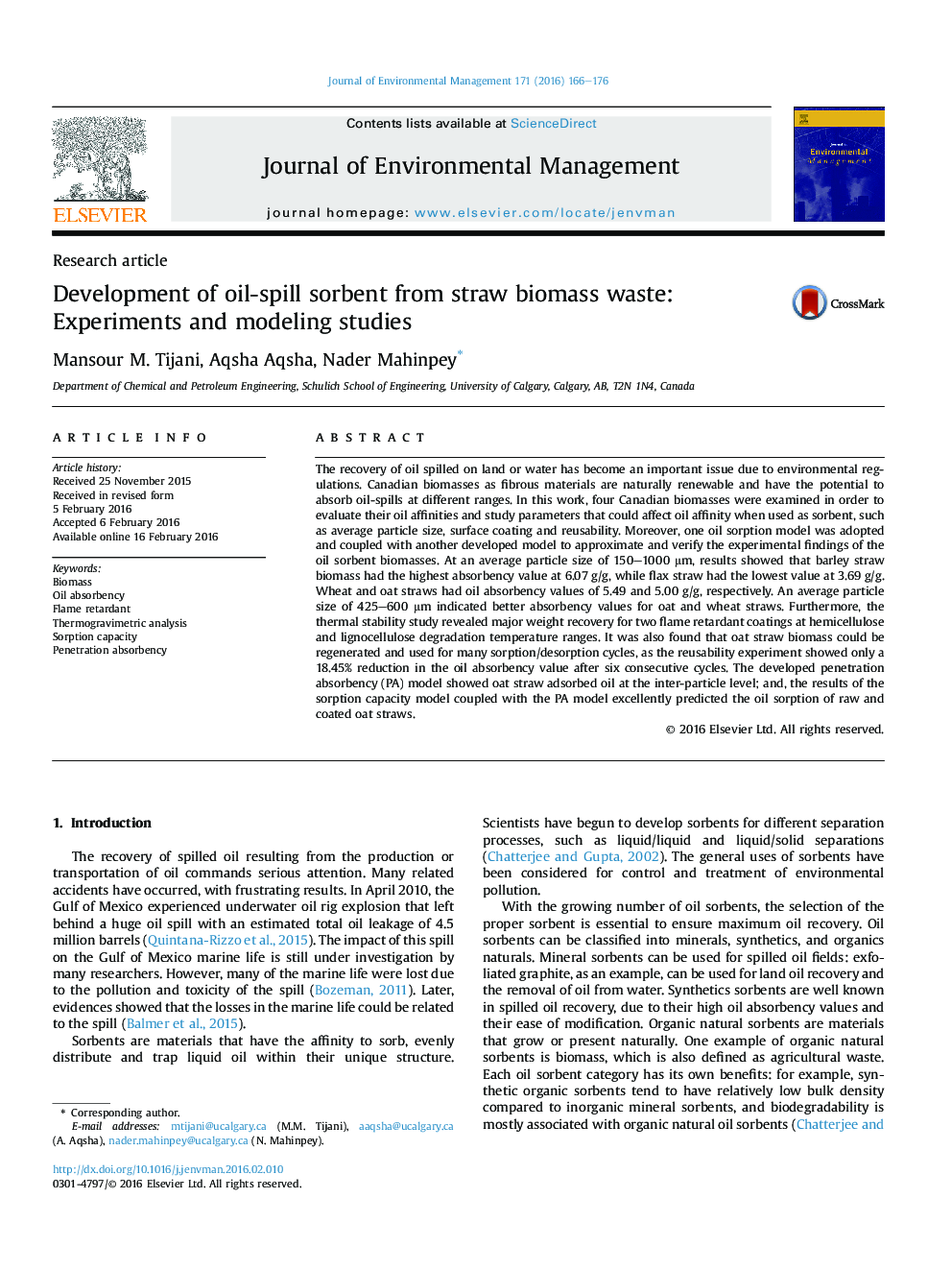| کد مقاله | کد نشریه | سال انتشار | مقاله انگلیسی | نسخه تمام متن |
|---|---|---|---|---|
| 1055309 | 1485241 | 2016 | 11 صفحه PDF | دانلود رایگان |
• The oil sorption capacity was measured for four Canadian biomasses.
• Higher sorption capacity was found in 425–600 μm average particle size of biomass.
• Oil sorption capacity reduced by 18.45% at the sixth cycle of sorption/desorption.
• Hydrophobic-coated biomass increased oil sorption capacity at low oil concentration.
• Penetration absorbency model was developed to estimate the sorption capacity.
The recovery of oil spilled on land or water has become an important issue due to environmental regulations. Canadian biomasses as fibrous materials are naturally renewable and have the potential to absorb oil-spills at different ranges. In this work, four Canadian biomasses were examined in order to evaluate their oil affinities and study parameters that could affect oil affinity when used as sorbent, such as average particle size, surface coating and reusability. Moreover, one oil sorption model was adopted and coupled with another developed model to approximate and verify the experimental findings of the oil sorbent biomasses. At an average particle size of 150–1000 μm, results showed that barley straw biomass had the highest absorbency value at 6.07 g/g, while flax straw had the lowest value at 3.69 g/g. Wheat and oat straws had oil absorbency values of 5.49 and 5.00 g/g, respectively. An average particle size of 425–600 μm indicated better absorbency values for oat and wheat straws. Furthermore, the thermal stability study revealed major weight recovery for two flame retardant coatings at hemicellulose and lignocellulose degradation temperature ranges. It was also found that oat straw biomass could be regenerated and used for many sorption/desorption cycles, as the reusability experiment showed only a 18.45% reduction in the oil absorbency value after six consecutive cycles. The developed penetration absorbency (PA) model showed oat straw adsorbed oil at the inter-particle level; and, the results of the sorption capacity model coupled with the PA model excellently predicted the oil sorption of raw and coated oat straws.
Figure optionsDownload as PowerPoint slide
Journal: Journal of Environmental Management - Volume 171, 15 April 2016, Pages 166–176
